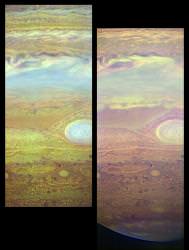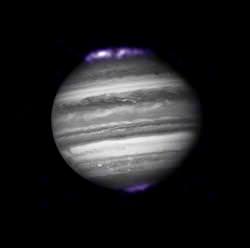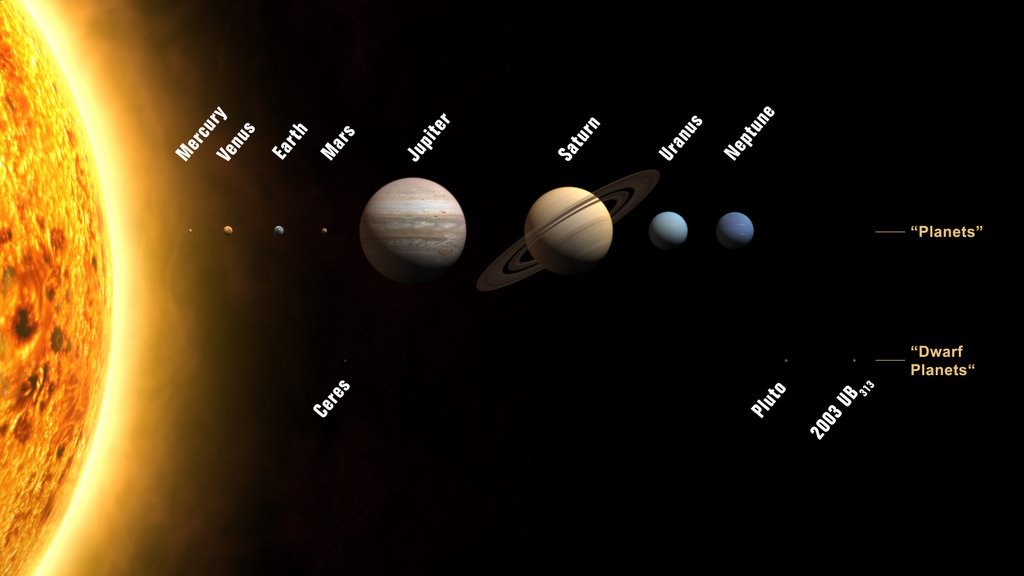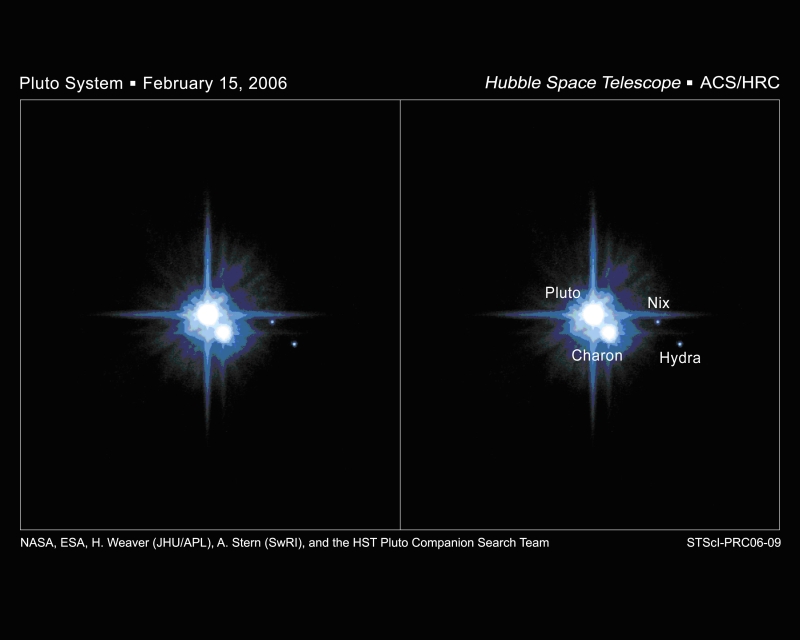 Even though New Horizon’s Jupiter flyby happened weeks ago, scientists are only just starting to crunch through the data sent back. They’re revealing better and better images of Jupiter, taken by the spacecraft’s powerful instruments. The image attached to this story was taken using New Horizon’s LEISA infrared camera. It’s a false colour photograph – not what you’d actually see if you were looking at Jupiter – but the fine details in the image are impressive.
Even though New Horizon’s Jupiter flyby happened weeks ago, scientists are only just starting to crunch through the data sent back. They’re revealing better and better images of Jupiter, taken by the spacecraft’s powerful instruments. The image attached to this story was taken using New Horizon’s LEISA infrared camera. It’s a false colour photograph – not what you’d actually see if you were looking at Jupiter – but the fine details in the image are impressive.
Continue reading “More Images from New Horizon’s Jupiter Flyby”
Chandra and Hubble Imaged Jupiter During New Horizons Flyby
 While NASA’s New Horizon spacecraft was making its gravity assisted flyby past Jupiter, some friends back at home were watching to help give the science some perspective. NASA’s Hubble Space Telescope and the Chandra X-Ray Observatory gathered images of Jupiter for several days before the flyby, and the combined photographs were released today.
While NASA’s New Horizon spacecraft was making its gravity assisted flyby past Jupiter, some friends back at home were watching to help give the science some perspective. NASA’s Hubble Space Telescope and the Chandra X-Ray Observatory gathered images of Jupiter for several days before the flyby, and the combined photographs were released today.
Continue reading “Chandra and Hubble Imaged Jupiter During New Horizons Flyby”
New Horizon’s First View of Pluto
Take a look at this photograph. See Pluto? It’s that little orange speck. This photograph was taken by the Pluto-bound New Horizons spacecraft. Although Pluto is just a tiny dot today, it’s going to get a lot bigger over the next 10 years when the spacecraft makes its close encounter in 2015. New Horizons used its Long Range Reconnaissance Imager (LORRI) to capture images of Pluto’s region of space over several days. Scientists then analyzed the images, looking for an object moving at the right speed across several frames.
Continue reading “New Horizon’s First View of Pluto”
Podcast: Pluto’s Planetary Identity Crisis
Pluto. It’s a planet, then it’s not. This week we review Pluto’s history, from discovery to demotion by the International Astronomical Union. Learn the 3 characteristics that make up a planet, and why Pluto now fails to make the grade.
Continue reading “Podcast: Pluto’s Planetary Identity Crisis”
New Horizons’ Telescope Sees First Light
Although New Horizons is still more than 9 years away from reaching Pluto, it’s ready to do some science along the way. The spacecraft passed an important milestone this week when it opened the protective cover on its Long Range Reconnaissance Imager (LORRI) and took a photograph of the Messier 7 star cluster. Stars were visible in this cluster down to 12th magnitude, which matches the instrument’s pre-launch calibration. New Horizons will start imaging Jupiter with LORRI as it approaches a Feb. 28, 2007 flyby.
Continue reading “New Horizons’ Telescope Sees First Light”
Pluto’s Out of the Planet Club

Last year we had 9 planets. Recently we were informed it would grow to 12. Now we’ve only got 8. The International Astronomical Union, currently meeting in Prague, voted on August 24, 2006 to demote Pluto down from planethood status. Now Pluto, Charon, Ceres and the newly discovered 2003 UB313 (aka Xena) will merely be known as “dwarf planets”. Under the new definition, planets must orbit a star, be spherical in shape, and clear out their neighbourhood of orbital debris. Pluto has failed to fulfill the third requirement, so it’s official – Pluto is not a planet.
Continue reading “Pluto’s Out of the Planet Club”
Officials Propose 12 Planets in the Solar System
The International Astronomical Union, currently meeting in Prague, has announced a proposal that would boost the number of planets in the Solar System to 12. Under their new classification, the asteroid Ceres, Pluto’s moon Charon, and the newly discovered UB313 (aka Xena) would join the traditional 9 planets we’re familiar with. Any additional large bodies would also be described as planets. The IAU will make a final vote on this proposal on August 24.
Continue reading “Officials Propose 12 Planets in the Solar System”
Pluto’s New Moons are Named Nix and Hydra

The International Astronomical Union approved new names for Pluto’s recently discovered tiny moons. Previously designated S/2005 P 1 and 2, the moons will now bear the names Hydra and Nix. In mythology, Nix is the goddess of darkness and night, while the hydra is a monster with the body of a serpent and nine heads. Although they’re faint dots right now, NASA’s New Horizons probe will fly pas them in 2015, and map them in much more detail.
Continue reading “Pluto’s New Moons are Named Nix and Hydra”
Pluto’s Planethood Will Be Decided Shortly
Pluto has been considered a planet since its discovery, but this position has come under threat with the discovery of 2003 UB313 (aka Xena), an object larger than Pluto orbiting out further in the Solar System. The International Astronomical Union will be meeting in August to decide on the fate of Pluto. By September, we could have 8 or 10 planets in the Solar System, but there won’t be 9 any more.
Continue reading “Pluto’s Planethood Will Be Decided Shortly”
Fast Moving New Horizons Tracks an Asteroid
Still a decade away from its final meeting with Pluto, New Horizons tested out its instruments on a relatively nearby asteroid. The spacecraft turned its Multispectral Visible Imaging Camera (MVIC) on asteroid 2002 JF56 at a range of 1.34 to 3.36 million kilometers (about 833,000 to 2.1 million miles). Controllers were happy to see that the camera system was able to track the asteroid while the spacecraft was moving so quickly; it’ll need this capability when it reaches Pluto. Its next stop will be Jupiter, which it’s due to encounter on February 28, 2007.
Continue reading “Fast Moving New Horizons Tracks an Asteroid”
